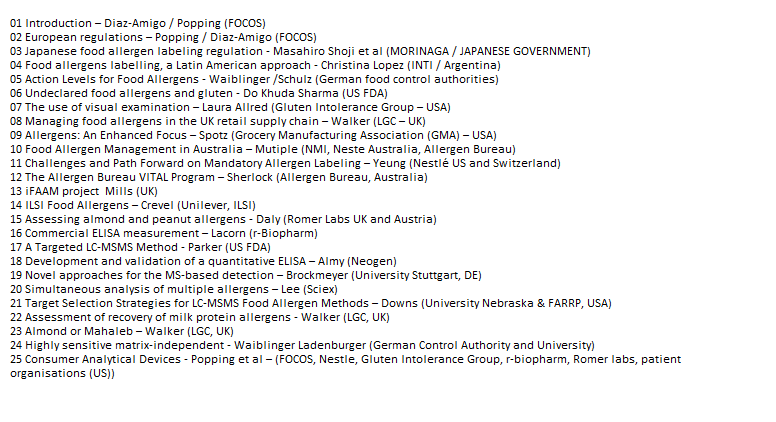The special section will be open access and the electronic version will be available from early December.
In recent years, food manufacturers, regulatory and enforcement agencies, method developers and commercial laboratories have seen significant changes that influence the way they work.
For manufacturers, changes in allergens management have been implemented. Regulatory agencies have generated and evaluated significant amounts of data through surveys about the prevalence of mislabeled products.
Also, new methods have been developed and adopted by government and private laboratories.
Highlighting the lack of consistency
This special section of the J. AOAC explains some of these developments and highlights areas not yet appropriately addressed, like precautionary food allergen labeling (PAL).

A German survey analyzed 6,029 samples and found 9% were mislabelled (i.e. containing allergens above action levels).
A total of 25 contributions covering five continents have been collected. These include manufacturers, regulatory agencies, organizations concerned with food allergens and method providers.
Carmen Diaz-Amigo and Bert Popping of FOCOS GbR said different regions have regulations or rules that differ in the list of priority food allergens and the way information should be presented to allergic consumers.
“Most jurisdictions require the labelling of priority allergenic food ingredients. However, issues leading to undeclared food allergens, such as of cross-contamination and mispackaging, are usually not regulated. This regulatory gap leaves up to the industry to define and implement best allergen control practices,” they said in the introduction to the special edition.
There are different analytical methods used for detection of allergens with ELISA being the most frequently used followed by PCR and LC-MS/MS.
Key authors and issues
The US FDA review summarized the prevalence of undeclared milk, egg, hazelnut, peanut, soy and gluten as detected by ELISA from previously published surveys.
Michael Walker of LGC outlines the approach of UK retailers to allergen risk assessment (RA) and management (RM) within the UK legal framework and public visibility of retailers’ allergen policies.
The authors said Precautionary Advisory Labelling (PAL) remains an area of confusion.
Nestlé said when ingredients and technologies are sourced worldwide from multiple business partners, complexity rises and this can increase the chance for errors leading to potential harm.
The firm outlines four ways to optimize allergen management for the benefits of allergic consumers.
The survey of Waiblinger and Schulze (German government control labs of Baden Würtemberg and Bavaria) found the percentage of analyses with detected allergenic constituents above the action level was 9% (out of 6,029 samples).
The percentage for non-prepacked foods was twice as high as for pre-packed foods (12% vs 6%). Traces of allergenic constituents below the action levels were found in 6% of all analyses, with no differences between prepacked and non-prepacked foods.
Other articles include Japanese food allergen labeling regulation and the Latin American approach.
